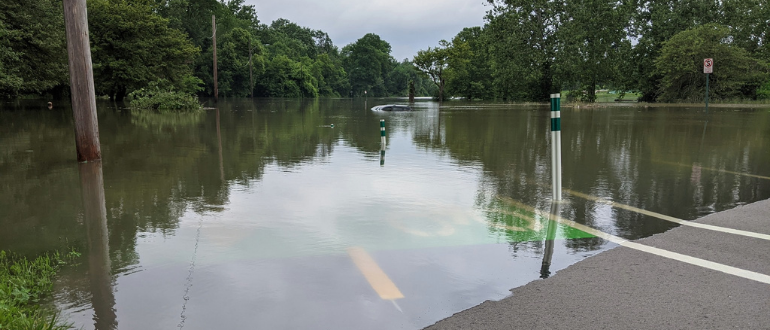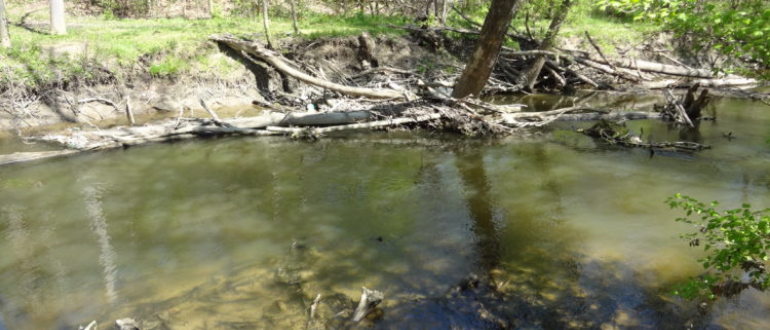Because the Rouge River watershed is over 50% urbanized, the Rouge River faces some difficult challenges. Urbanization generally means that there is a high percentage of the watershed covered with impervious surfaces. Impervious surfaces are those that do not allow water to percolate or absorb through the soil. These types of surfaces include parking lots, streets, rooftops, and driveways and lead to large amounts of surface water that runs off into the river during wet weather events.
Rouge River Watershed Map of Impervious Surfaces, 1995
Increased volumes of runoff can lead to flooding and a higher velocity or flow of the river. Increased flow creates friction along the stream banks and eventually the bank itself begins to erode away and the loose sediment is carried down stream.
Sediment creates a number of problems for aquatic life:
- When sediment settles to the bottom it covers the living space for many bottom-dwelling plants and animals.
- Sediment can block sunlight for aquatic plants.
- Sediment can clog the gills of fish.
- Sediment reduces the amount of dissolved oxygen in the water, which is necessary for aquatic organisms to survive.
- Sediment carries other pollutants such as phosphorus and heavy metals to the river.
Flooding and erosion control measures include:
- Reduction in the percentage of impervious surfaces; use of more porous materials such as gravel and grasses.
- Stream bank stabilization practices such as not mowing to the edge of the river bank and planting deep rooted plants and grasses.
- Replace lawn grass with native gardens.
- Collection of rain water in rain barrels and rain gardens.
How Flooding in the Rouge Watershed is an Environmental / Public Health Threat
In June of 2021, the Metro Detroit area experienced a severe rain event that left many homes, parks, streets, and expressways flooded. During that single day, parts of the Detroit area received six inches of rain, and the downpour overwhelmed municipal “combined sewer overflow” systems in many communities. During heavy storms, such systems (which combine storm water runoff with local sanitary systems) can lead to release of untreated sewage directly into the river. Additionally, rapid flooding causes erosion of river and stream banks and damages local river ecosystems.
In the accompanying article, Sally Petrella (FOTR Monitoring Manager) and Mary Bohling (MSU Extension Educator) spoke with WXYZ News regarding the Metro area’s failing sewer infrastructure and the types of damage created by severe rains.

